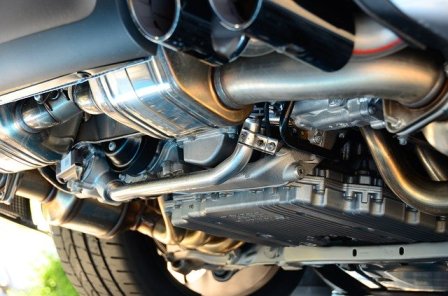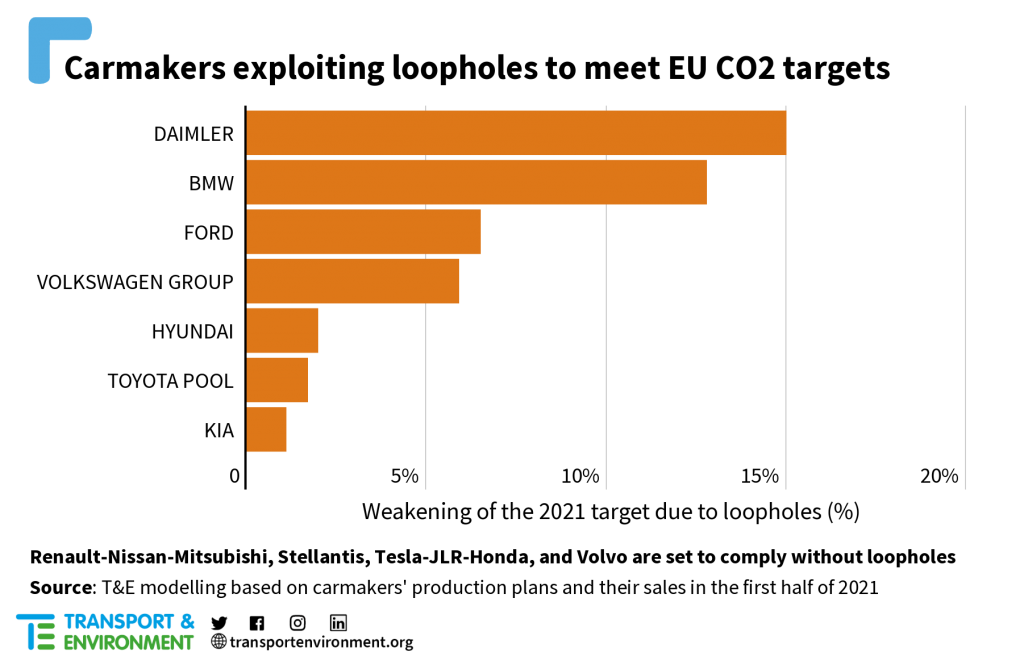
Electric car boom at risk says T&E report
CO2 emissions from new cars dropped by almost one fifth from 2019
The report shows that the sales of plug-ins have multiplied by four across Europe, and by five in the EU, with the entry into force of the 2020/21 CO₂ target: from 3% in the first half of 2019 to 16% in the first half of 2021 (7.5% BEV). This has led to a total reduction of CO2 emissions of 18% since the entry into force of the 2020/21 car CO2 regulation.
The majority of carmakers are already compliant, but 840,000 electric sales will be lost due to loopholes
Five groupings of carmakers (or “pools” as referred to in the law): Tesla-JLR-Honda, Volvo, BMW, Daimler and Stellantis are already compliant with the 2021 target as of July, six months before the deadline. Ford, Toyota-Mazda-Suzuki-Subaru and Kia are close with a gap of less than 2 g/km while Volkswagen, Hyundai and Renault-Nissan-Mitsubishi have gaps around 3 g/km. This shows carmakers are once again on track to meet their CO₂ targets and will all comply at the end of the year.
Carmakers’ CO₂ targets are weakened by regulatory loopholes
Four regulatory flexibilities – adjusting CO₂ targets for heavier cars, eco-innovation credits, super-credits multiplying sales of plug-ins, and pooling sales with other carmakers – allow carmakers to close 16% of the gap to the 2021 target. T&E calculates that these regulatory flexibilities, as well as the unrealistic CO₂ rating of PHEVs, will prevent the sale of 840,000 battery electric cars across Europe in 2021. This is the climate cost of the flawed design of the regulation.

T&E estimates that if carmakers deliver on their voluntary plans, the CO₂ from new cars would be reduced by as much as 30-35% by 2025. In comparison, the regulation asks for a mere 15% reduction that would be reached as soon as 2023. The CO₂ emissions would be further reduced by 45-50% in 2027, and 65-70% by 2030. This is double the 2030 target currently in force and is significantly above even the newly proposed 55% reduction.
Our policy recommendations
T&E recommends the regulation is amended by the European Parliament and the European governments to increase the current level of the targets:
- To ensure an effective CO₂ reduction and optimal supply of BEVs, Europe needs at least a 30% CO₂ reduction from new cars from 2025 and 45% from 2027.
- For the entire car fleet to be zero emission in 2050, the last new car with any CO₂ emitting engine must be sold no later than 2035. To be on the feasible path to 100% zero emission sales in 2035, sales of ZEVs will need to hit at least 67% in 2030, which corresponds to a CO₂ reduction target of -80%.
Information Source: Read More
Oil and gas, press , | Energy, Climate, Renewable, Wind, Biomass, Sustainability, Oil Price, LPG, Solar


